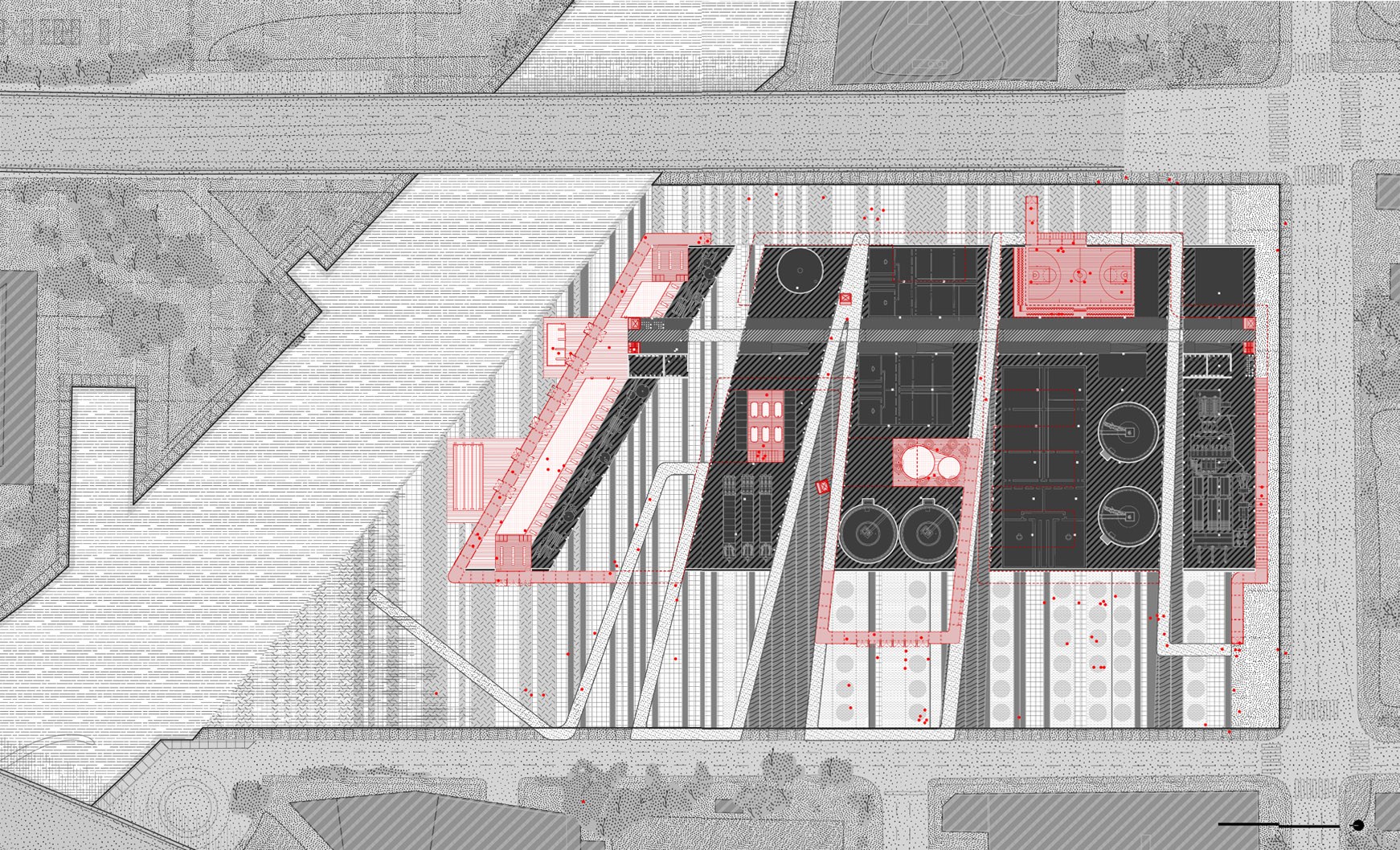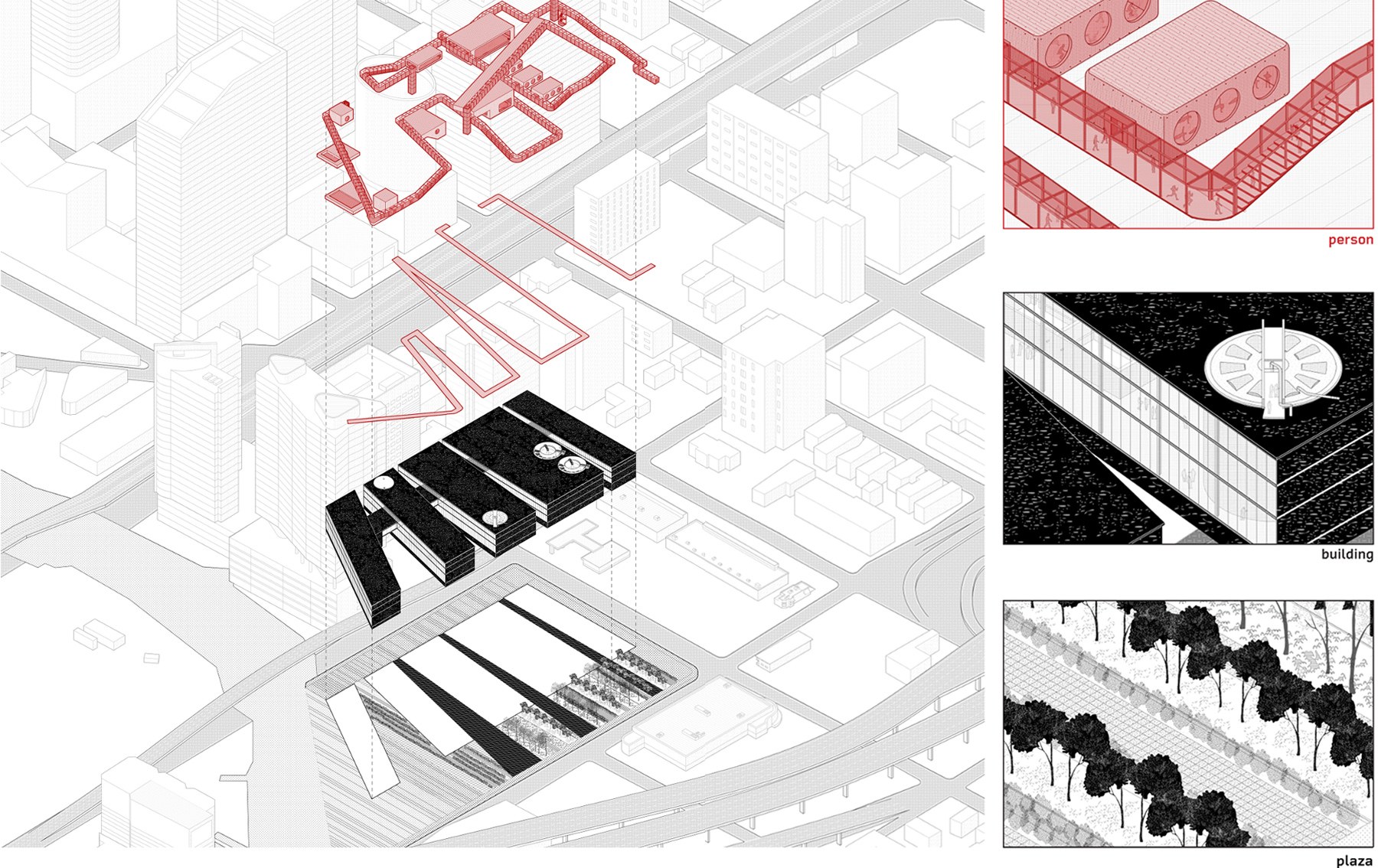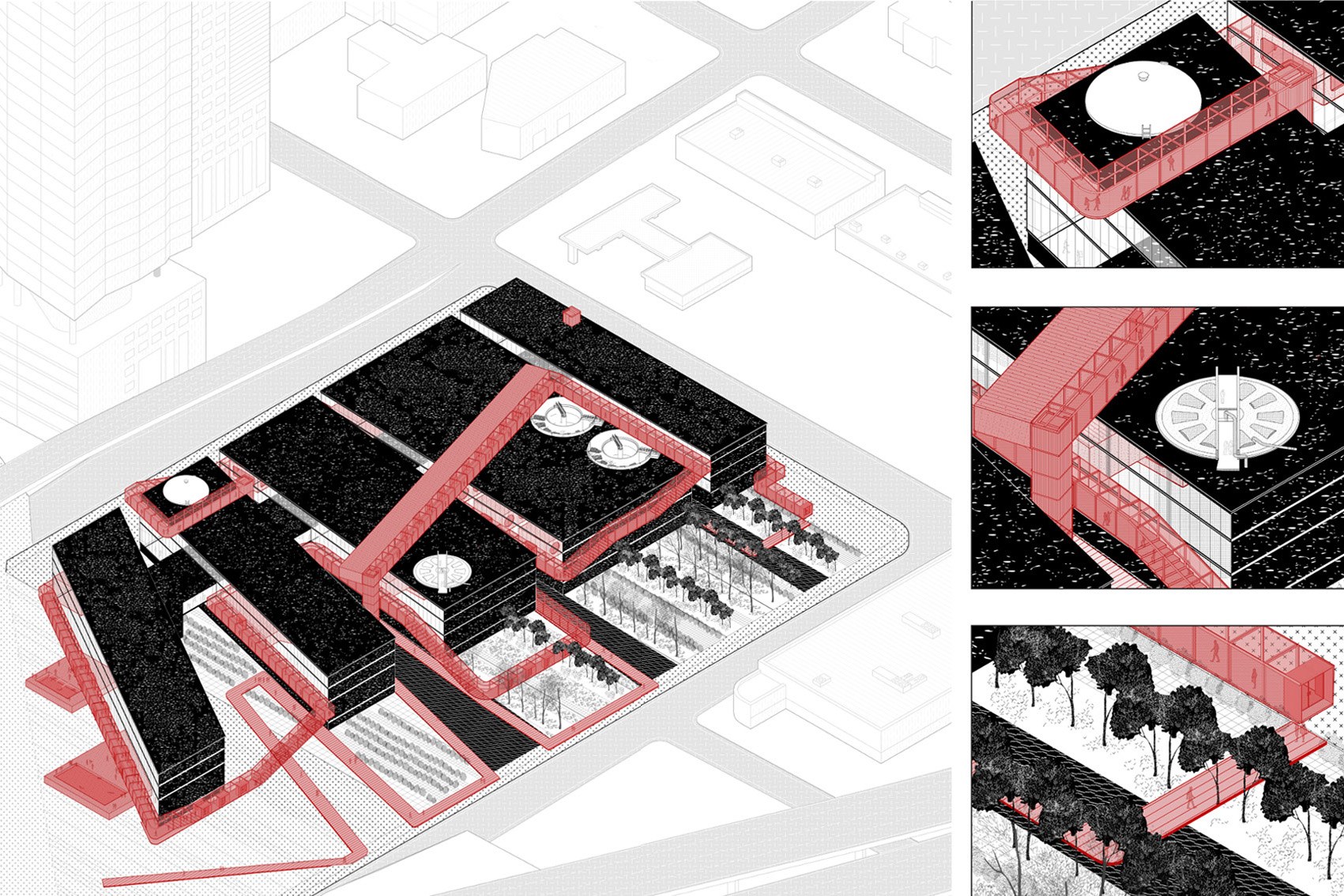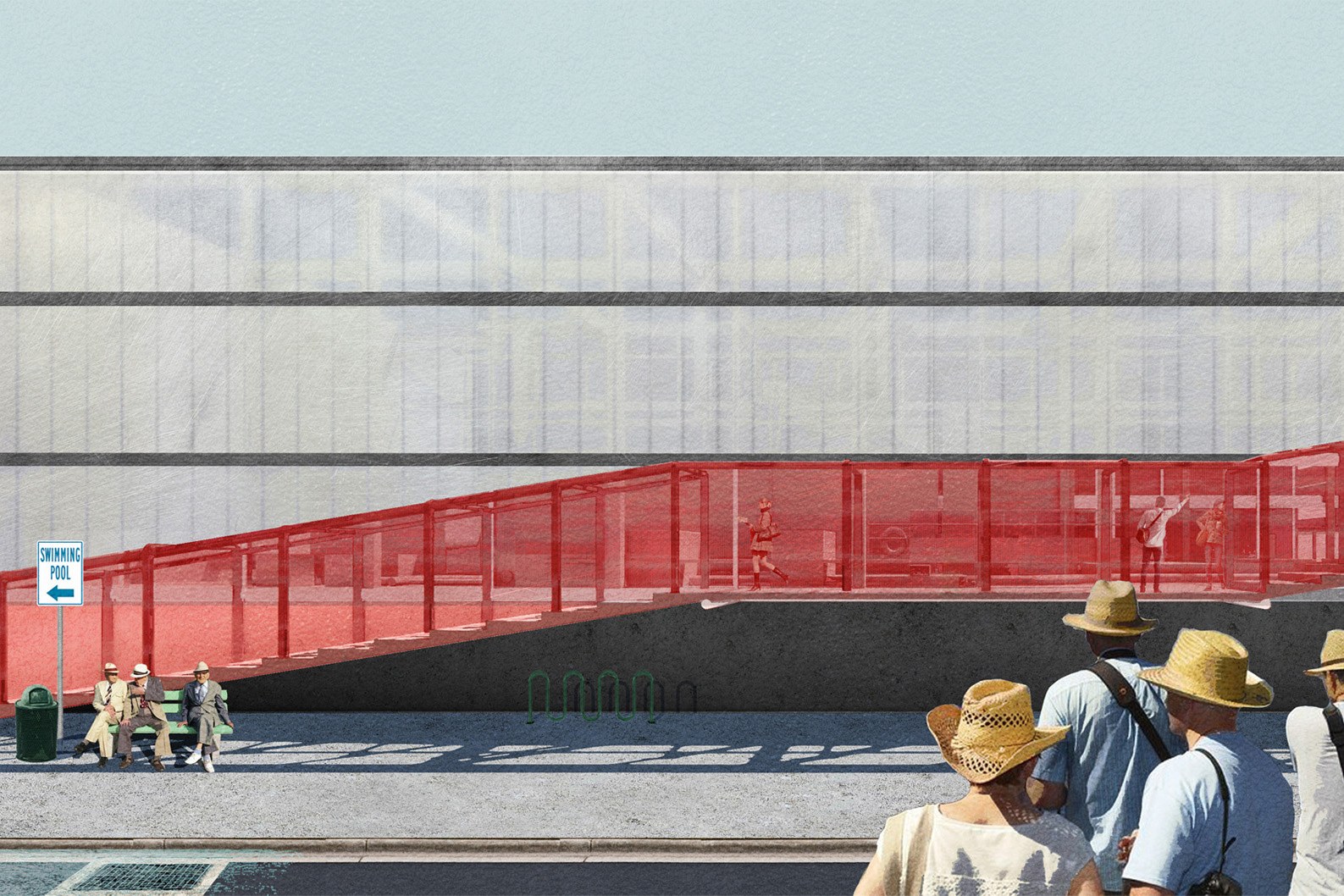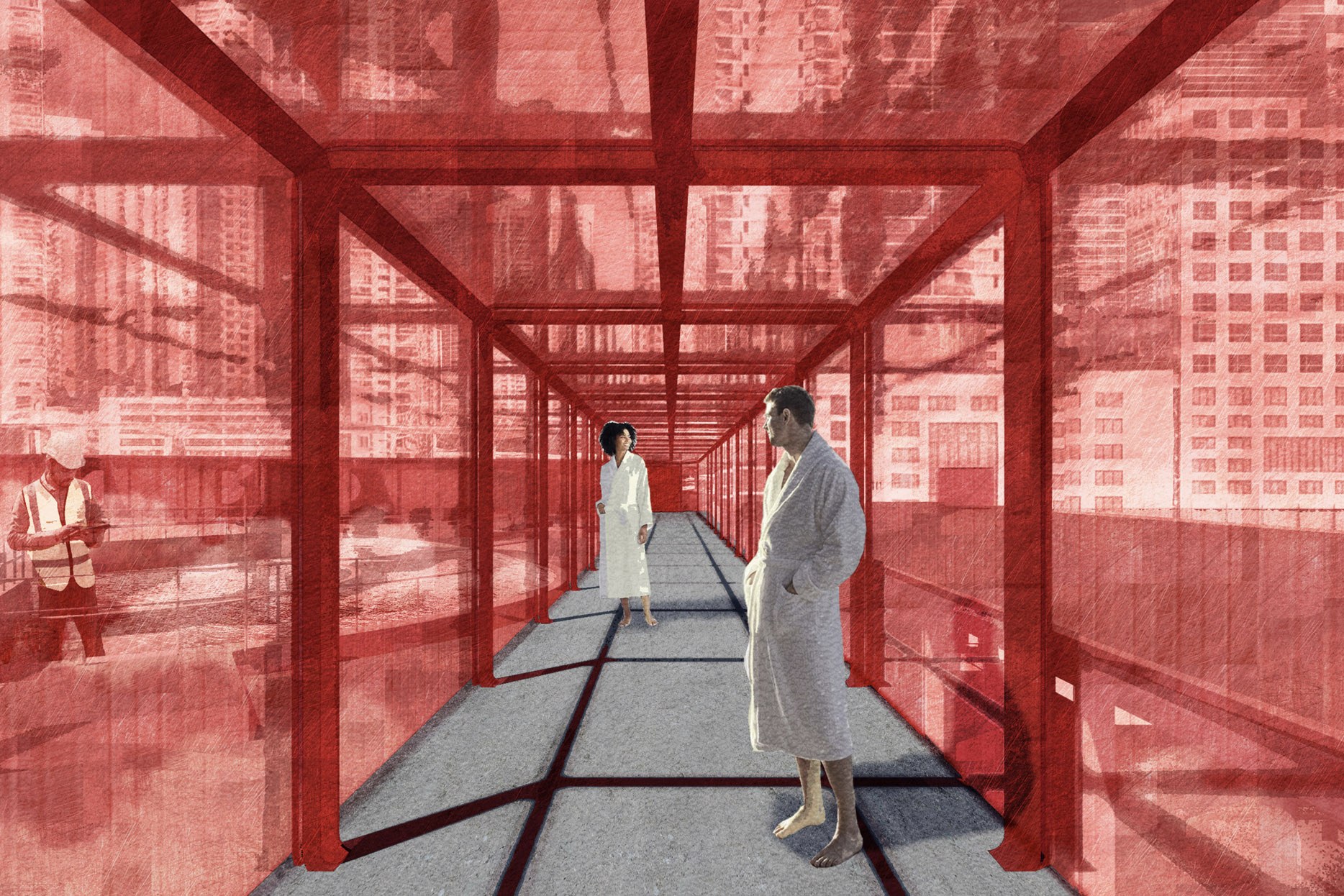Thesis Highlights
“Industrial Interface"
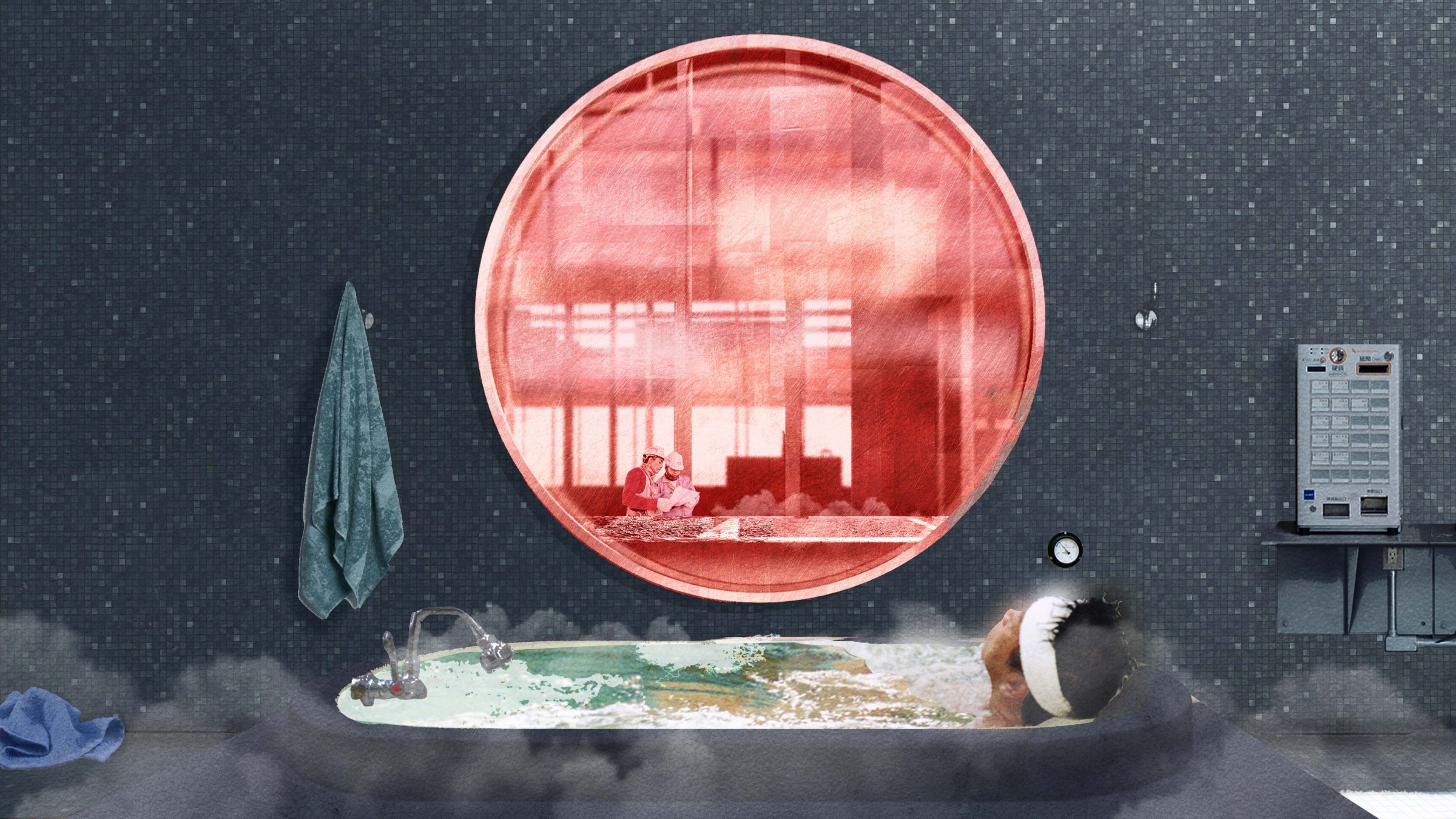
Leah Bohatch and Camille Kreisel, 2023
“Industrial Interface: A Transparent Relationship Between Wastewater Treatment and the Human”
The wastewater industry is currently an isolated system despite its great importance in serving the city and its inhabitants, creating a linear relationship that wastes a limited resource while harming the health of its source: the body. Looking towards the future of water infrastructure, a wastewater treatment plant in Miami utilizes a cyclical system that treats sewage water and uses the reclaimed water within the building to support the heat-stricken city and pedestrians through the programming of a breathing, cooling aquatic center. Within the site, water becomes an interface between industry and the body, in which programs such as bathhouses, pools, and mechanical rooms use reclaimed water to support the inhabitant. Public programming and circulation are introduced through a curated ribbon that weaves throughout the wastewater treatment systems, creating an interwoven and dependent relationship.
As a result, there occurs both a physical and social boundary between these systems and the person. Due to this separation, wastewater treatment systems are seen as dirty and unclean, a misperception that leads to a loss of advantages that could take place if the treatment process was enveloped within everyday life. These physical and social boundaries lead to a lack of willingness amongst many to consume treated and reclaimed wastewater. As an increase in the demand for water grows in major cities, the reuse of treated wastewater can help to alleviate this need, but reclaiming wastewater does not occur due to misperceptions that this process is unsafe. By inserting wastewater treatment systems within everyday life on a smaller scale, this creates a network of water treatment that will address local water problems and increase optimized management of the water types. This inversion brings the city infrastructure and domestic space together to form a new industrial commons that generates new relationships and programs for a hybridized future.
The systems in Miami have led to the pollution of untreated sewage to bleed into waterways, threatening the health of the city and the individual, calling for a necessary change. Dangers caused by sewage discharge, rising sea levels, and stormwater overflow harm the context. Lack of potable recycling furthers the Biscayne aquifers scarcity while an overall isolation hinders people from trusting the possibility of potable sources. With wastewater treatment systems in a national crisis, the proposal for Miami goes beyond a monolithic solution, as a model for a new future of treatment and recycling within a city whose unique cultural identity is linked to its coastal placement.
The first proposal of these microscale wastewater treatment centers is located on the Miami River, in the heart of the city. This project weaves together the industrial systems of wastewater treatment with communal aquatic programs, creating a hybridized building and a new industrial commons.
WORK

